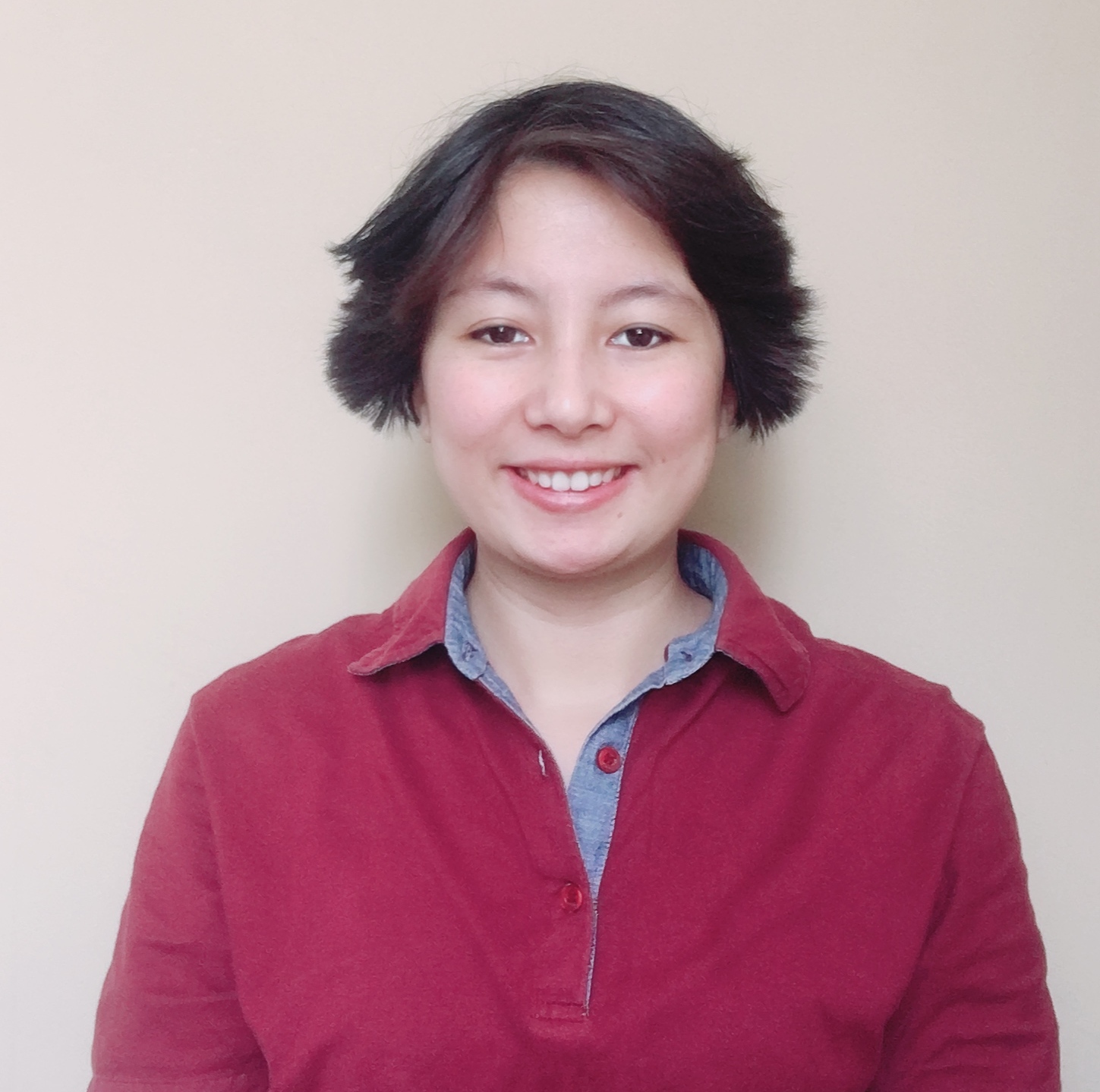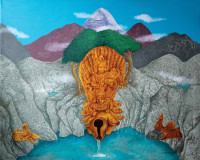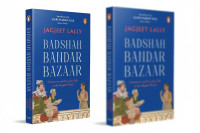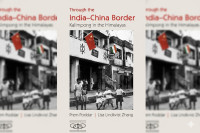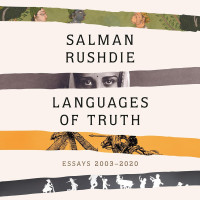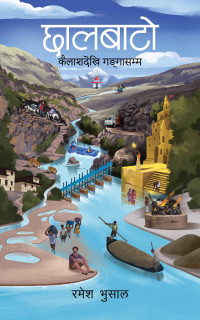Books
Dinesh Raj Pant: First you should study, understand and then promote
Historian Dinesh Raj Pant talks about his love for books, history, and the trend of history writing and its challenges..jpg&w=900&height=601)
Srizu Bajracharya
There are books everywhere as Dinesh Raj Pant leads the way to the few chairs in his home library. There are stacks of photocopied editions of Purnima, a research journal devoted to Nepali and Sanskrit studies of which Pant is the editor. Many other books that reflect his love for Nepal’s history, like Lain Singh Bangdel’s Stone sculptures of the Kathmandu Valley, Studies in the South Asian Heritage, Bahadur Shah the Regent of Nepal, and Sagar SJB Rana’s Singha Durbar, are neatly piled.
Seventy-one-year-old Pant is a member of the Nepal Academy and chief of the Social Sciences Department. He spends his days reading students’ dissertations and guides them with their studies. Pant sports thick glasses and carries around a heavy study-material laden suitcase everywhere he goes. It’s evident the man is a bibliophile. “There’s no other way I could live my life, because this was the only thing I was good at. I love studying and teaching,” he says.
Pant has published nearly 700 research articles in Nepali history, culture, literature, Sanskrit studies and astronomy; he’s also done about 24 independent research books on the subjects. He has also co-authored many books on Nepal’s historical accounts with his father and brother. In an interview with the Post’s Srizu Bajracharya, Pant talks about his love for books, history, and the trend of history writing and its challenges.
How did you first come to love books?
My childhood was ordinary; it was about going to school and studying. But reading was always an essential part of my life, since I was very young. I think it has a lot to do with my family’s background; my great grandfather, my grandfather and my father were all intellectuals, historians.
I read all the time. It’s what I do best. Reading is a blissful activity for me, it perks me up—it makes me content.
As a daily routine, I love to read the daily newspapers. I enjoy the diverse content. I do have a bad habit though, as I have a tendency to read to spot errors and faults. But it’s different when I am reading literature and poems; there I lose myself without the urge to identify the mistake.
What about writing, do you write often?
Writing is not as easy as reading for me. I need my time with it. I really have to research and read a lot before I write. It isn’t something that I can do in half an hour. A few years back, a reporter once said to me that for my age, I hadn’t written that many books. But, I believe quality matters more than quantity.
As a writer, it is imperative that your work is accurate and credible because the information in the book is going to shape people’s thinking. If you write something inaccurate, you will be imparting false knowledge to people. Of course, intellectuals who understand the subject will say I didn’t do my research properly and that I’m bluffing, but the more naive readers will believe it and may even base their knowledge on this. And that’s why I am extra careful with my writing and take my time to write.
What was one of the first books that you read and enjoyed?
As a young man, I enjoyed reading Kalidas’s works. I remember reading Raghuvaa, a Sanskrit maha kavya. I had even memorised it. The book tells how a good leader fosters development and how a bad leader can fail it. I also enjoyed reading Bala Krishna Sama, whose works were really deep. Still, I think the one author I kept following and going back to in those days was Bhim Nidhi Tiwari, particularly a story about Ekadashi.
But the more I read, the more I feel like I know so little. And that’s why there’s always a hunger to learn more. And I think, in general, that is the difference between people who read and don’t—those who read understand that there is much more they need to understand, while others just talk.
What keeps you writing Nepal’s history?
I am a proud Nepali man, and that identity itself necessitates research about the culture and traditions that we take pride in. And, for me, it’s imperative I seek knowledge, and understand it before promoting it. I believe in going to the depth of any topic, before publishing any work.
You are an integral part of Samsodhan Mandala, a research institute for Nepalese and Sanskrit studies. Can you tell me a little about the drive behind the institution?
Samsodhan Mandal was born out of the need to practice evidence-based research, and thus we later started Purnima, a research journal primarily to understand the history of Nepal and verify the knowledge that we found for further public discourse. There were many history books written before, but there was also a need to study and bring together knowledge. Before us, there weren’t any institution that carried out such works. Our work was influential in the sense that it stressed the need to do in depth research, not just reading, but working hard to get your information. And we have still been publishing Purnima, we have now reached our 144th issue.
But what do you think are the challenges of history writing today?
Although I think people have been exploring history as an academic subject, it hasn’t received the seriousness it deserves. Even in universities, where history is being taught as a subject, the teachers haven’t been able to guide history students properly, to inspire them to work hard on their knowledge and practice. The teachers themselves fail to work hard. And that is one of the reasons the subject itself is losing students.
History, however, is a subject that everyone needs—even students of engineering and architecture. Understanding the past is vital for understanding the future and to build on that knowledge.
Another reason history writing hasn’t received the respect it deserves also has more to do with how things are today: people, instead of reading and learning, start talking first. I believe one should first read, study and understand, then get to promoting ideas and knowledge. It’s the other way round these days, and perhaps that’s why there is more division in the world.
Can you run me through your writing process?
Usually, when I sit down to write, I go on and on, in my own flow, even when I realise I have made a mistake. I don’t stop until I am done. I then take days to go back to what I have written, to verify my information, and then get back to my writing. I check my information several times before publishing my work. I have a lot of drafts. But I handwrite my work even to this day; I am not used to technology.
What are you currently writing about?
I am working on a book called Prithvi Narayan Shah ka Patra Haru. It is a collection of letters—some penned by Prithvi Narayan himself and some that were sent to him—and writings about his achievements and work. I have also been writing a commentary which is 300 pages, right now. I have been working on this book for many years, and I still think I need more time to finish it.
What are the five books you would recommend as must-reads to people who want to understand the history of Nepal?
I think I would suggest Dhana Vajra Bajracharya’s Lichhavi Kal Ka Abhilekh; Naya Raj Pant, Devi Prasad Bhandari, Gautam Vajra Bajracharya and Dinesh Raj Pant’s Shri Paanch Prithvi Narayan Shah (volume 1-5); Ludwig F Stiller’s The Rise of the House of Gorkha; Mahesh Raj Pant’s Janai Purnima Dekhi Rani Pokhari Sama; and Gyan Mani Nepal’s Nepal Nirukta.




 17.12°C Kathmandu
17.12°C Kathmandu